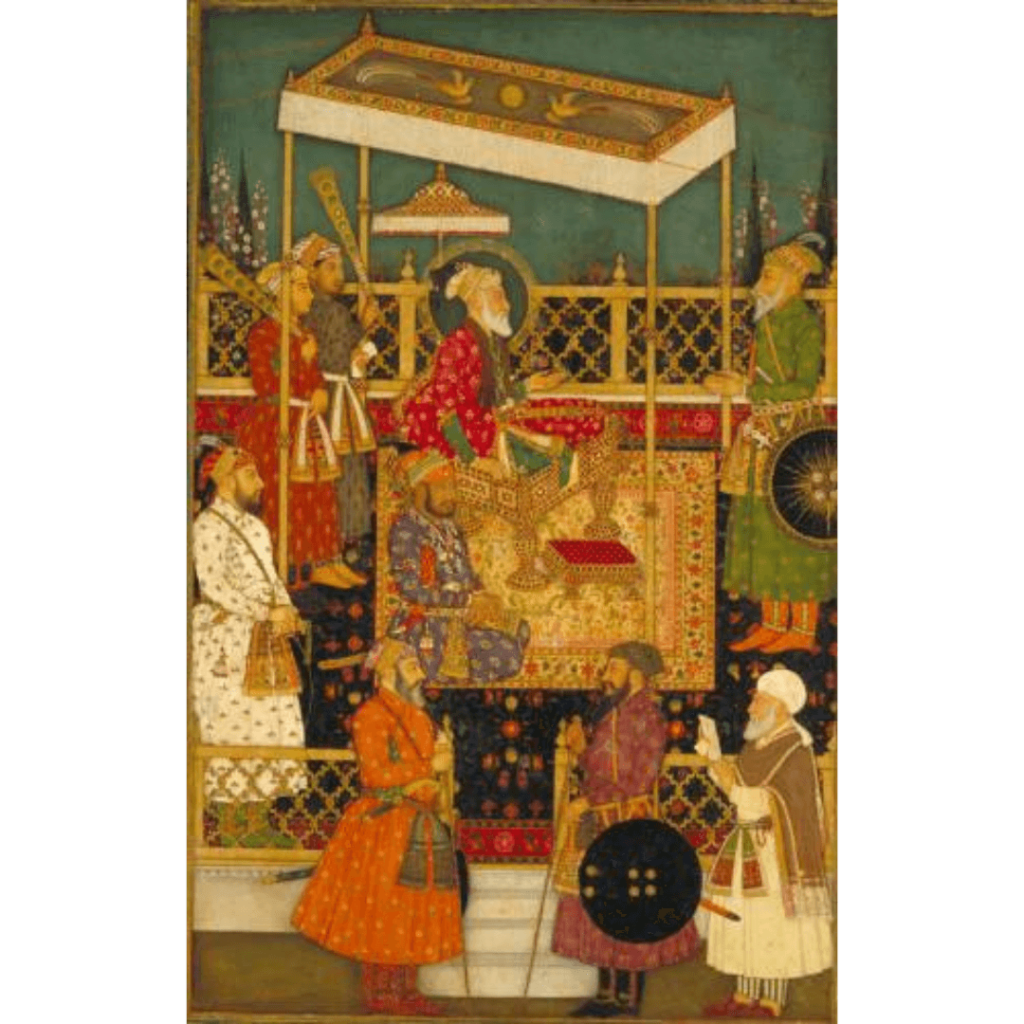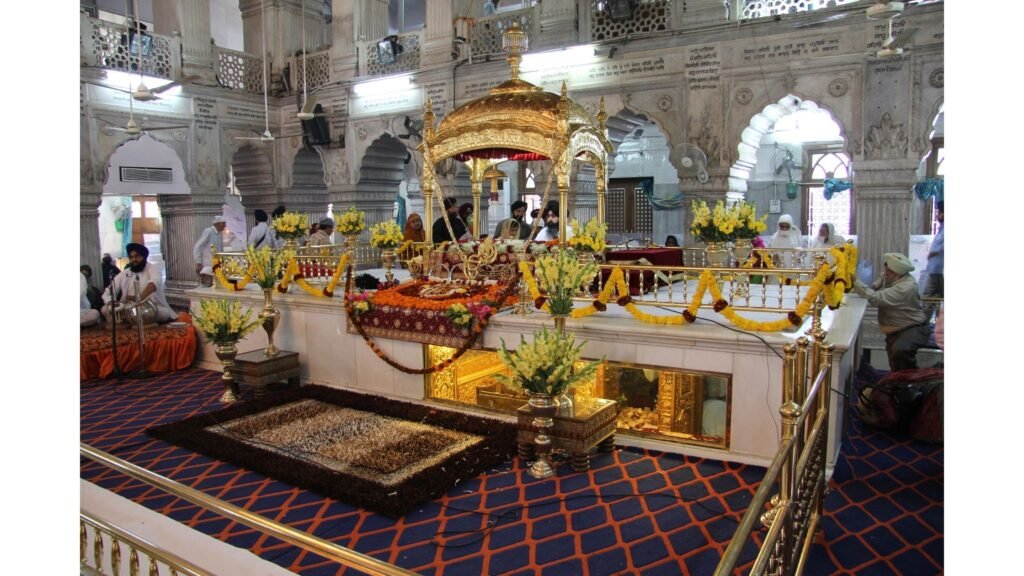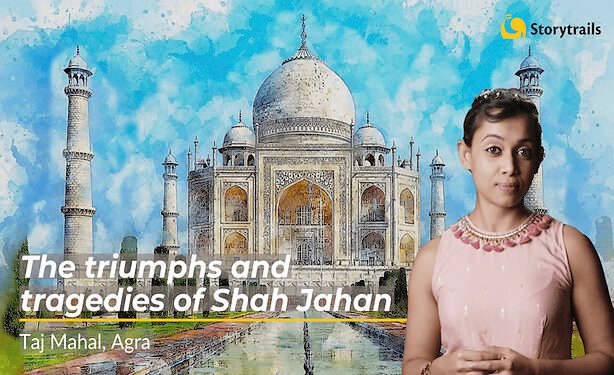Sikhism is a philosophy propounded by Guru Nanak in the early 1500s. At its core is the belief that no matter which faith people belong to, they are all children of God. So the three important tenets of Sikhism are religious tolerance, brotherly love and honest living.
The growth of Sikhism was contemporaneous with the growth of the Mughal empire. The early Mughals were aggressively expansionist and often waged fierce wars against their neighbours. They were Islamic kings controlling a land of ‘Kafirs’ – or people who followed other faiths. Indeed, religious tolerance was usually not the priority of many of the Mughal emperors, although there were notable exceptions.
Sikh philosophy on the other hand, emphasized religious tolerance and Sikh Gurus often spoke up openly against intolerance. This put them in direct conflict with the Mughal kings. Some Mughal kings used force to bring the Sikhs in line and the Sikhs responded with armed resistance. Ironically, the religion that advocated brotherly love was forced to take up arms to protect its way of life. These conflicts became more intense with the reign of Emperor Jahangir. In 1606, Guru Arjan Singh, the 5th Sikh Guru, was the first of the Sikh Gurus to be executed by a Mughal king. Emperor Jahangir had him tortured and executed because he had shown common hospitality to a rebellious prince, Jahangir’s own son, prince Khusrau. It was an event that changed the Sikh sentiment forever. The quietly devout religious group of Sikhs took to arms, resisting religious persecution under the Mughal rule.
Even more tragic is the story of Guru Arjan’s grandson, Guru Tegh Bahadur, who died at the hands of Jahangir’s grandson, Aurangzeb. Guru Tegh Bahadur died championing the cause of Kashmiri Pandits who were not even Sikhs, but Hindus!
Guru Tegh Bahadur was born Tyaga Mal, the last son of the 6th Guru, Guru Har Gobind. He was well versed in the Hindu scriptures like the Vedas and Upanishads and in keeping with his times, he was also well versed in martial arts. His campaigns against the Mughal army earned him the title ‘Tegh Bahadur’ or ‘Brave Swordsman’. However, he had no religious or temporal ambitions. After his military service, he quietly retired to his village, Bakala, where he devoted his life to looking after his parents and to prayers.
In 1664 the 8th Guru, Guru Har Kishan, died of illness and a chain of events led to Guru Tegh Bahadur being appointed as the 9th Guru. Guru Tegh Bahadur did not seek Guru-status, but once vested with authority, he plunged into his duties with zeal.
At this time, most of the Indian subcontinent was ruled by the Mughal king, Aurangzeb. He ruled with an iron fist. Aurangzeb’s dislike of the Sikhs was more than his predecessors’. There was a background to this. He had conquered vast territories through raw military might and was trying to keep a tight control over the biggest kingdom in the world; and here was a highly organised group of armed people called Sikhs, with independent thoughts on society and religion. In his perception, they could turn into a rebellious threat to his authority anytime. And Aurangzeb’s generals fuelled this by feeding him intelligence that they thought he wanted to hear. For instance, one contemporary Mughal record describes Guru Tegh Bahadur as a person who extorted money from non-Muslims through coercion.

All was not well in the Sikh camp either. According to some historians, Ram Rai, the brother of the previous Guru Har Kishan, was mischievously instigating Aurangzeb against Tegh Bahadur. He had been one of the aspirants to the position of Guru when his brother died but lost the succession race to Tegh Bahadur. It was also possible that a few orthodox Hindus in Aurangzeb’s court were influencing the emperor.
Around this time, Sher Afghan Khan, Aurangzeb’s viceroy in Kashmir, was on a vigorous campaign to convert the Kashmiri Hindus to Islam. Temples were vandalised and many Kashmiri Pandits who resisted were killed. Guru Tegh Bahadur had travelled extensively in Kashmir in 1672 and had won many friends. So, when the situation became desperate, a contingent of 500 Kashmiri Pandits under the leadership of Pandit Kirpa Ram* approached the Guru and asked for his protection.
Guru Tegh Bahadur decided to take up their cause. He advised them to tell Aurangzeb that they would convert willingly, if Tegh Bahadur did so first. Of course, Tegh Bahadur had no intention of converting. It was the Guru’s ploy to divert Aurangzeb’s attention away from the Kashmiris and on to himself.
As expected, Aurangzeb sent summons to Guru Tegh Bahadur. Guru Tegh Bahadur rightly suspected that he might not return from this mission. So, he nominated his young son, Guru Gobind, as the next Sikh Guru. Then he proceeded to Delhi for negotiations. As expected, Mughal soldiers arrested him on the way. Aurangzeb asked him to convert to Islam and Guru Tegh Bahadur summarily rejected the idea. So, Aurangzeb had him and his three close companions put in a cage and tortured. Then he had the three companions executed in front of Guru Tegh Bahadur. Yet the Guru did not budge. A day later, on November 24th, 1675, Guru Tegh Bahadur was publicly beheaded at Chandni Chowk in Delhi.
The Guru’s severed head was taken by a loyal devotee to Anandpur in Punjab and the cremation was performed by Guru Gobind. Many years later, Maharaja Ranjit Singh built the Gurdwara Sis Ganj Sahib to mark the place where the head was cremated.
Guru Tegh Bahadur’s headless body was quietly taken by another devotee to his house. He secretly performed the cremation inside the house and then set fire to the entire house, so that the Mughals would not suspect anything. Today, that site is marked by Gurudwara Rakab Ganj Sahib in Delhi.

There is also a Gurdwara in the very site in Chandni Chowk where the Guru was beheaded. That too is known as the Gurudwara Sis Ganj Sahib. All 3 shrines are very holy to the Sikhs. Every year the Sikhs observe November 24th as the day of the Guru’s martyrdom.


After the Guru’s execution, Aurangzeb’s zeal for converting the Kashmiri Pandits was exhausted. Guru Tegh Bahadur’s martyrdom was a rare sacrifice. He was a Sikh but he died protecting the religious freedom of Hindus!

* The martyrdom of Kirpa Ram: After Guru Tegh Bahadur was executed, Pandit Kirpa Ram went to Anandpur to be with the 10th Guru, Guru Gobind, Tegh Bahadur’s young son. He became his Sanskrit teacher and was a constant companion. In the later years he took the vows of a Sikh. He became Kirpa Singh and led the Sikhs against the Mughals. He was one of the defenders when the Mughals besieged Fort Chamkaur in Punjab with a huge army. The Sikhs were grossly outnumbered and many were killed. They asked Guru Gobind to leave so that he could live to lead them another day. The Sikhs started abandoning the fort unobtrusively in small batches of five. The Guru managed to exit safely. Kirpa Singh, along with the Guru’s sons, were the last of the defenders at the fort. Unfortunately, they were all killed before they could escape.



